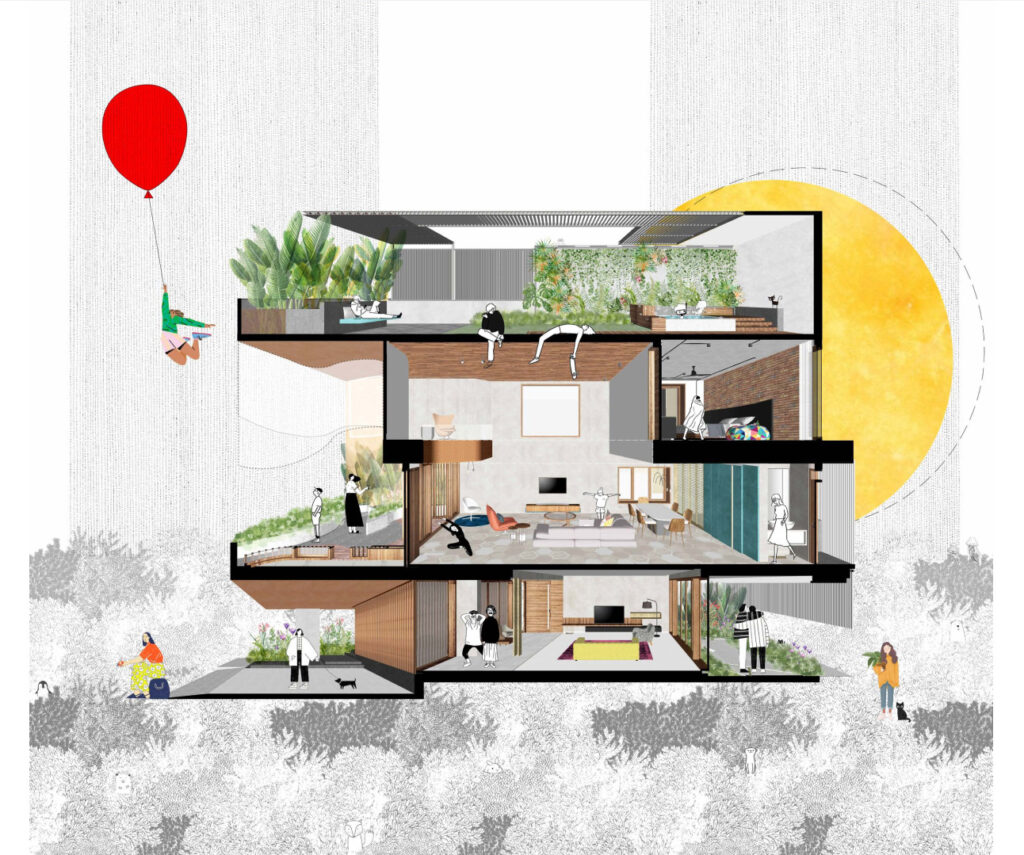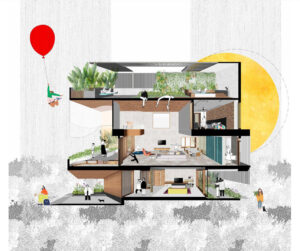
Behind The Design
How Effective Housing Layouts Can Improve Mental Well-Being
Some spaces feel amazingly inviting where others feel cold and isolating. Why? The answer lies in spatial design.
How Thoughtful Housing Layouts Can Improve Mental Well-Being
Some spaces feel amazingly inviting where others feel cold and isolating. Why? The answer lies in spatial design.

Table of Contents
🧠 Your home is more than just walls and rooms.
It’s your sanctuary, your stage, and your mind’s background noise.
We often talk about therapy, mindfulness, or self-care routines — but we rarely talk about how the layout of our homes affects our emotional and psychological health.
Yet research and experience are clear:
The design of a space can either nourish or drain your well-being.
🧩 How Housing Layouts Shape Mental Wellness
Let’s break it down. Here are 5 powerful ways layout can support (or sabotage) mental health:
🌞 1. Natural Light and Orientation
Homes that allow daylight to enter living areas throughout the day:
✅ Regulate circadian rhythms
✅ Reduce stress and depression
✅ Improve alertness and sleep quality
Tip: South-facing windows and open-plan living spaces boost exposure to healthy daylight.
🚪 2. Privacy and Flow
We need control over when we’re seen and when we retreat.
Good layouts provide:
- Private bedrooms tucked away from shared zones
- Bathrooms accessible without crossing high-traffic spaces
- Clear separation between work and rest zones
This reduces friction, promotes autonomy, and lowers mental fatigue.
🚶♀️ 3. Movement and Transition
A healthy layout supports smooth flow through the home.
No one wants to:
- Walk through someone’s bedroom to get to the kitchen
- Enter a bathroom directly from the dining room
- Feel trapped in tight, awkward corridors
Clean transitions = clean mental energy.
🧍♂️ 4. Zones for Interaction and Isolation
We’re social beings — but not all the time.
A great housing layout balances:
- 🛋 Shared zones for meals, conversation, activity
- 🛏 Retreat zones for rest, privacy, and alone time
Emotional safety comes from choice — not forced togetherness.
🌳 5. Connection to Nature and the Outside World
Homesthat frame views of gardens, courtyards, or streets help people feel:
- Connected
- Grounded
- Less isolated
Even a window seat with a tree view can work wonders for daily mood.
🧠 What the Research Says
Studies in environmental psychology, architecture, and healthcare design all point to similar findings:
- Layouts that support autonomy, flexibility, and natural light improve mood
- Poor layouts contribute to stress, irritability, and even family tension
In short: layout = mental load.
🔨 How to Design Homes That Support Well-Being
✅ Use open layouts with clear circulation
✅ Allow visual access to outdoor spaces
✅ Zone for privacy without isolation
✅ Avoid cluttered or overlapping functions
✅ Design every room with its emotional role in mind
💡 Final Thought
“Your home should not just shelter your body — it should support your mind.”
Architecture isn’t just about what we see.
It’s about how we feel.
So if we care about well-being,
We must care about how we shape the spaces we call home.
“Your layout is either healing you — or wearing you down.”
#Architecture #Design #SpatialDesign #UrbanPlanning #SpaceSyntax #BuiltEnvironment #DesignThinking #SocialArchitecture #PublicSpace #DesignPsychology #PatternLanguage




